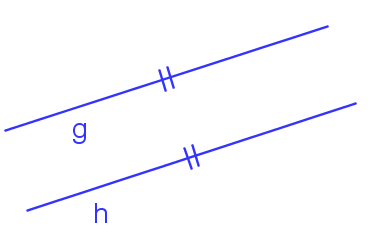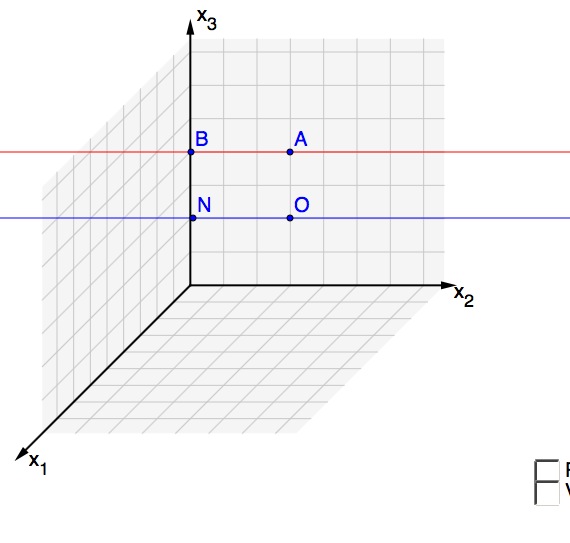Parallel Lines (Linear Functions)
Parallelism is a special positional relationship between two straight lines.
Two lines are parallel if they have the same distance at every point.
How to draw or construct two parallel lines can be found in the article Parallel lines.
Lines in a plane
Two lines in the plane are parallel if they do not intersect.
If two straight lines are given in the line equation then they are parallel exactly when , i.e. when the slopes of the two straight lines match.
You can try this out on this applet, where you can change the slope () and intercept () with the sliders.

Two parallel straight lines
The two pairs of short lines in the middle denote the parallelism
Lines in spaces
Two straight lines in space are parallel if they lie in a common plane and do not intersect. They are therefore parallel to each other in this plane.
